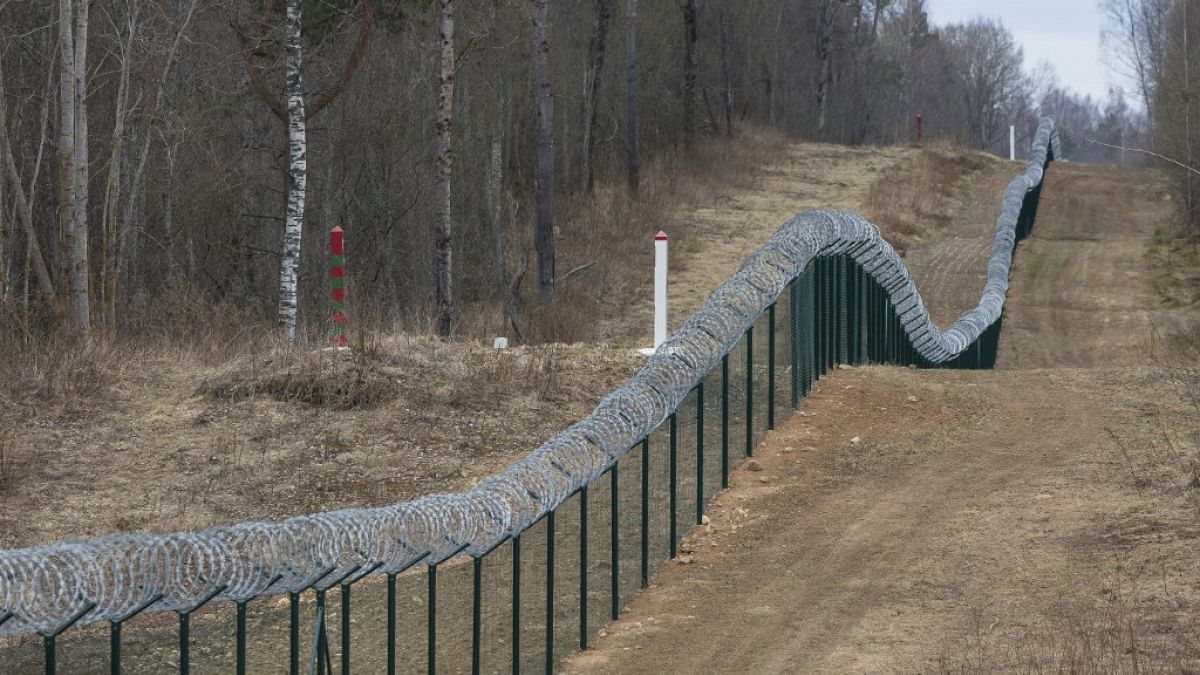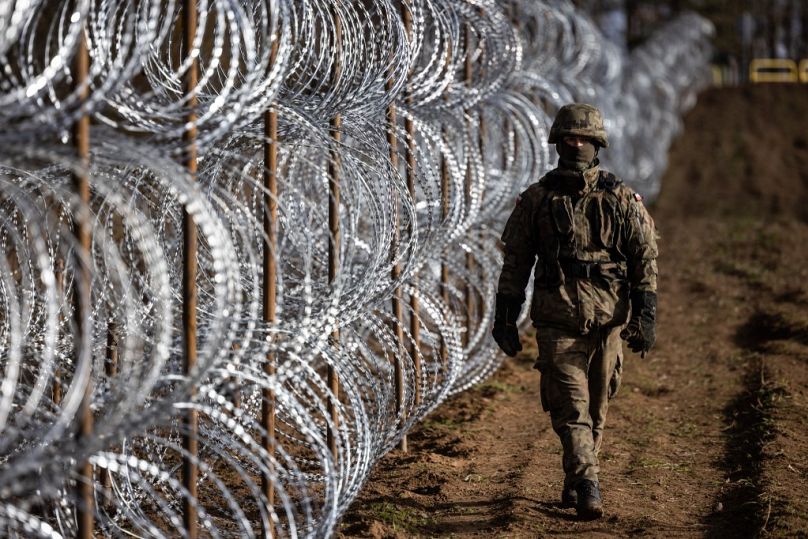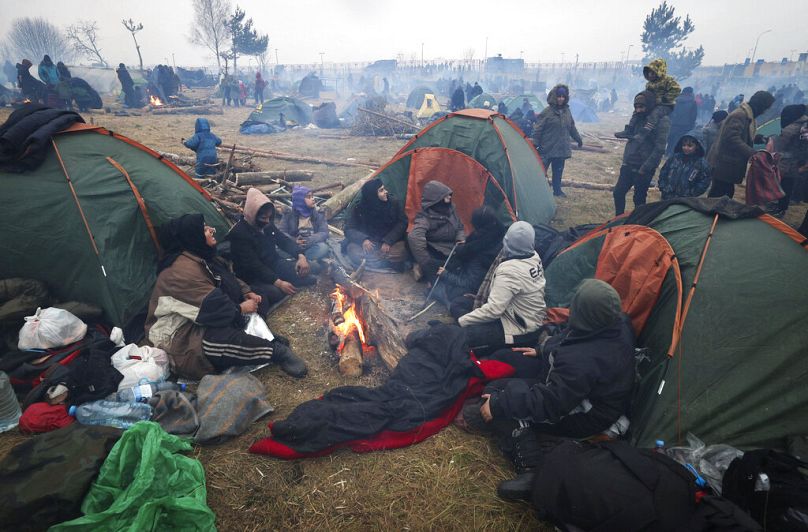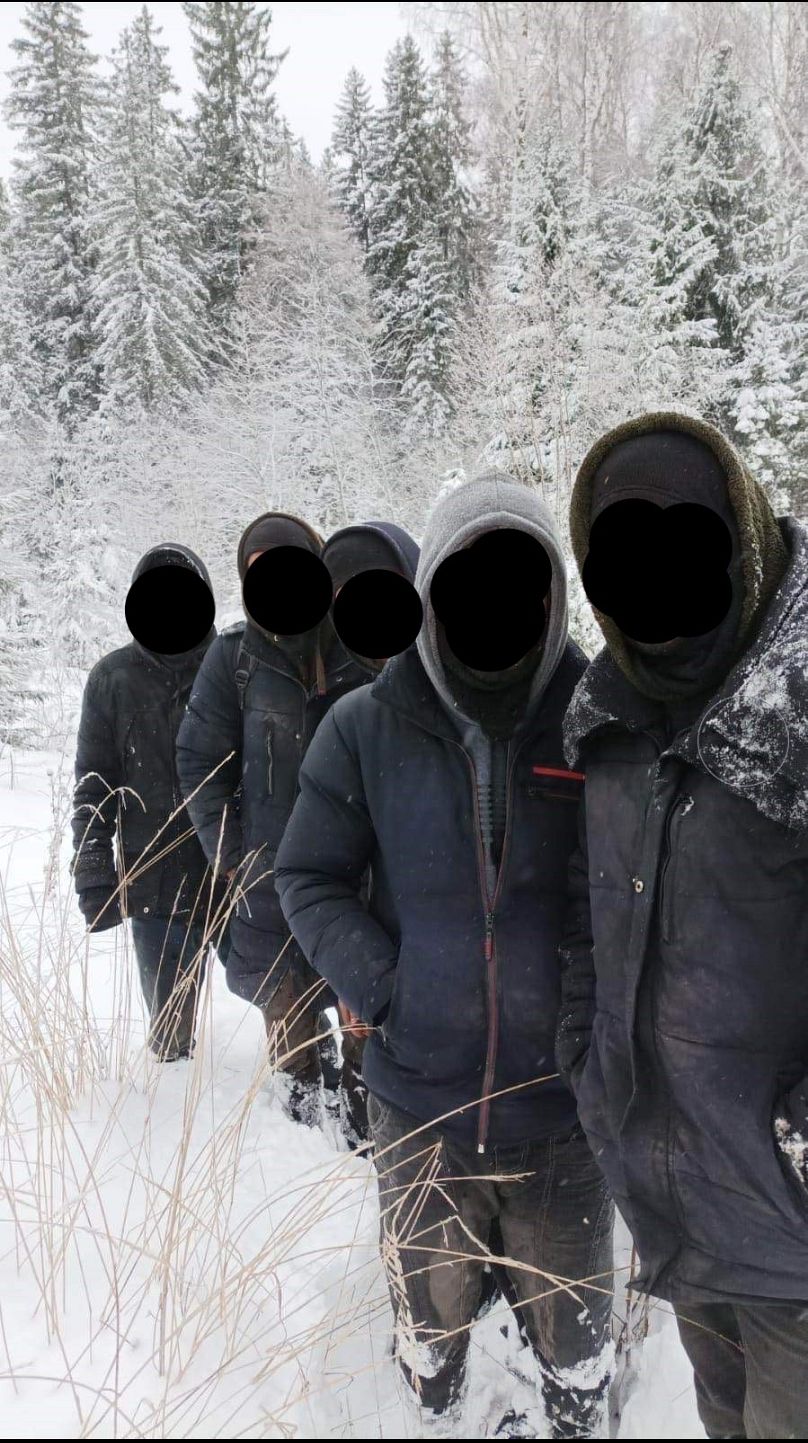When neighbouring countries put up huge razor-wire fences along their borders, it simply pushed people elsewhere, say observers.
“We don't even know how many people died on the Latvian border last year, let alone their names,” Toms Ancitis, a researcher of migration in Latvia, told Euronews.
“This is horrible. And even more horrible is that very few care about it in Latvia. No media, no NGOs, no civil society.”
“People die in silence.”
Since 2021, a migration crisis has rumbled on the EU’s easternmost fringe, with tens of thousands of migrants risking life and limb to enter the bloc from Belarus.
Most have gone towards Poland and Lithuania, but Latvia has increasingly become a hotspot.
In November, authorities in the tiny Baltic state said there was an uptick in attempted entries by migrants – mostly from Asia, Africa and the Middle East – though numbers are lower than at their peak.
Migration to Latvia has been impacted by a displacement effect.
In a bid to keep people out, nearby Lithuania and Poland have erected huge razor-wire fences along their borders and ramped up policing.
Yet, rather than deter people, this has simply forced them to go around to Latvia, say observers.
“It's happening everywhere in Europe,” Ancitis told Euronews.“You build a fence that makes it way more dangerous. Then smugglers and people adapt.”
“It's a symbolic act. Photos and videos of the barbed wire give the public a feeling of security and that politicians are providing it. But nowhere in Europe has a fence stopped migration.”
‘The risk of dying is there. It's real’
In contrast to Poland and Lithuania, one issue is few observers are documenting what is happening on the frontier, while the number of humanitarian organisations is dwindling.
In December, Medicines Sans Frontiers (MSF) pulled out of the country, citing concerns for migrant welfare.
Amid this black hole, Ancitis claims migrants are regularly dying on the border – a largely forested area infamous for its cold, brutal winter conditions.
He suggested the figure could be as many as three people per month, though Euronews cannot confirm this.
The majority of fatalities, says Ancitis, are likely to be Iranian nationals.
Volunteers in neighbouring Lithuania have raised similar concerns about migrants who have gone missing in the opaque border zone, as they grimly scour hospitals and morgues for information.
Belarusian forces have been documented selling food to needy migrants, while simultaneously violently preventing them from returning.
But this is not one-sided.
Declaring a state of emergency in 2021, which suspended the right to seek asylum, Latvian border forces have also forcibly pushed people back – sometimes the same person several times a day.
854 people were prevented from trying to "illegally cross" the border between January and March this year, while in 2022 a total of 5286 people were "deterred", according to the State Border Guard.
This has given rise to a situation where migrants are trapped in an effective no man’s land, camping out in freezing conditions on the 172km border with Belarus for several months.
An Amnesty International report accused Latvian special forces of forcibly detaining people in heavily-controlled tents in undisclosed locations, exposing them to intimidation, verbal abuse and physical violence, including beatings and electric shocks.
The human rights organisation claimed this amounted to torture.
Latvian authorities denounced the 67-page report – titled ‘return home or never leave the woods’ – as ‘bogus’.
The interior ministry was quoted by the Associated Press news agency as saying that "not a single case has been identified" of Latvian authorities abusing migrants.
In a statement sent to Euronews, the State Boarder Guard described a "tendency" of the Belarusian authorities to take away people's shoes and clothing during cold weather, "deliberately and criminally exposing the persons' health and life to danger."
One Afghan man died of hypothermia after crossing into Latvia from Belarus in December.
Meanwhile, several migrants lost their legs to frostbite in Lithuania last year, following prolonged exposure to wet and cold conditions.
“The emergency situation has caused quite a lot of suffering and resulted in the inhumane treatment of people whose rights should be respected,” Ieva Raubisko from Latvian NGO ‘I Want to Help Refugees’, told Euronews.
“Even if they are considered to not need asylum, this should be done in proper procedure.”
‘That’s no way to treat a human being’
Riga justified the state of emergency – since extended several times – by claiming Belarus was weaponising migrants to wage "hybrid warfare" against Latvia and the EU.
This extraordinary situation, it said, allowed the country to suspend the right to seek asylum in four border zones, despite contravening EU law.
Yet, Ancitis challenged such arguments.
“The smugglers who are organising this are private actors,” he said. “The state somehow permits them to do it. But I don't believe this is very carefully organised, with a clear purpose.”
Latvian officials have also claimed migrants crossing from Belarus are a security risk, despite little evidence to support this.
“The only argument from the authorities has always been the security and the safety. This sows the seeds of fear in society,” explained Eglis Grasmanis, a volunteer at the Latvian NGO ‘I Want to Help Refugees’.
“I am more afraid about what they’re doing on the border.”
Grasmanis said the situation on the border ultimately raised profound questions about Latvia itself.
“The big question is: Are we really a country that stands for human rights and values of democracy – or not?”
Before the Ukraine war, he says Latvia lacked the capacity and resources to deal with refugees.
“But the great cooperation of our society, NGOs and institutions in the case of the Ukrainians showed we can deal with large amounts of refugees.”
“All it needs is political will.”
Latvia has received more than 46,000 refugees from Ukraine since Russia invaded in February.
A significant proportion of migrants crossing from Belarus are from Syria, Yemen or Afghanistan – countries torn apart by years of bloodshed.
In a statement sent to Euronews, the Latvian Interior Ministry said last year its border force allowed 216 persons to enter the country on "humanitarian grounds".
"[The] Latvian legal framework, which lays down the conditions and opportunities for the entry and residence of third-country nationals, as well as their inclusion in Latvian society, is fully consistent with the European Union law," it said.





